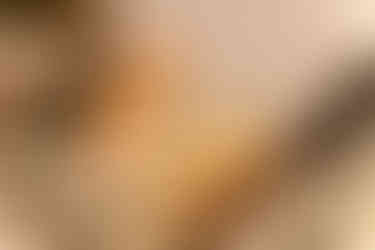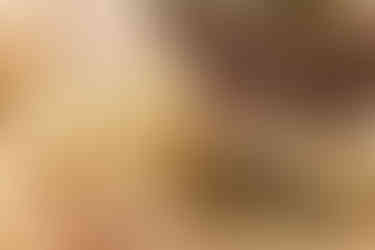Blackfoot History at Head-Smashed-In Buffalo Jump
- Emily Fata
- Jul 1, 2019
- 7 min read
A UNESCO World Heritage Site and home of the Museum of Blackfoot culture, Alberta's Head-Smashed-In Buffalo Jump is an incredibly preserved piece of Canada's Indigenous history, as well as a must-see for any visitor.

Last summer, I had the opportunity to visit the incredible UNESCO World Heritage site, Head-Smashed-In Buffalo Jump (its native Siksika name is Estipah-skikikini-kots). Having spent my entire childhood in the Canadian educational system, it's no surprise that I had learned a great deal about the lives of the Indigenous people who first inhabited our nation (prior to Europeans entering the land and stealing it away from the natives, all the while wreaking havoc on their bands). Thus, when the chance to see this location arose while staying for a weekend in Calgary, I jumped on the chance for this afternoon excursion... Not to mention the ability to explore an ancient archeological site, which has always been a fascination of mine.
Though the site itself, located in the province of Alberta just eighteen kilometres (eleven miles) northwest of Fort MacLeod, spans 4,000 hectares (nearly 9,990 acres), the main walkable locations to visit in the area are much smaller; indeed, most of what you will want to see is within the Museum of Blackfoot Culture—which is also where you purchase your $15 entry ticket—and the entrance to the Head-Smashed-In Buffalo Jump observation deck itself.

We began by heading straight to the elevators, taking us up to the uppermost level of the Museum of Blackfoot Culture, where we could walk over to the lookout point facing the major cliff of Head-Smashed-In Buffalo Jump. From here, we were also able to fully admire the stunning landscape enveloping it. Along the route to the cliff, you are surrounded by views of the dark green fields of the Great Plains, rolling up to the point in which they meet the foothills of the Rocky Mountains in the hazy distance.
Along the path, bushes and flowers catch your eye, creating a visual runway directly to the natural historical landmark directly ahead, which lays on the opposite side of a large rotunda viewing point.

Here, you have an unadulterated view of Head-Smashed-In Buffalo Jump, Calderwood Buffalo Jump, and Vision Quest Hill to the north; the great prairies to the east; and the Rocky Mountains to the south. The former was named a UNESCO World Heritage Site due to its immense historical, archaeological, and scientific interest. Deep and undisturbed layers of animal bones (mostly American Bison, which were hunted at this very spot by Indigenous bands) give modern-day researchers a glimpse into nearly six thousand years of continuous occupation with only one long period of time with unexplained, interrupted hunting. This landscape is a crucial example of subsistence hunting (that is, hunting solely for the purpose of survival, as opposed to hunting for sport or killing animals when other food options are available); this carried all the way into the late nineteenth century, when European settlers flocked to the area to murder mass numbers of Buffalo for the cross-continental fur trade. This is what eventually caused the American Buffalo to nearly go extinct.
As well, Head-Smashed-In Buffalo Jump is the best preserved example of the communal hunting techniques that the Plains people engaged in, thanks to the massive herds of bison that existed in North America for over five thousand years. It serves as a testament to the eras in which Europeans had not yet come to North America, where the intricate practice of bison jumps were utilized by the Indigenous people of the North American plains, as opposed to the ammunition that their European counterparts had developed for the purpose of hunting. The First Nations extracted the goings-on of this custom based on their long-standing comprehension of bison behaviour and topography, in combination with their knowledge of natural barriers such as depressions and hills (as well as man-made 'bushes') to funnel these animals into runway-like drive lanes that ended at the cliff's edge, over which the bison toppled.

At the time that this practice was carried out, the drop over the cliff would have been about nine metres (thirty feet); however, over the centuries, the land has filled in and the cliffs have eroded, making the drop appear much smaller. Had the drop been as short as it is today, the buffalo jump would not have been successful.
The men in charge of chasing the bison (who were dressed in bison pelts and, to the visually inept buffalo eye, appeared as one of their calves) were believed to be gifts from the Creator. After a night of prayer and reflection, they 'sweat away' their human scent in a sweat lodge, purifying themselves for the task ahead of them on the following day.
When looking down to the flat land below, you can imagine where the bands would have set up camp. Here, they waited patiently for the buffalo to fall over the cliff's edge to their deaths, where they would then begin the process of cleaning up the bodies and scavenging them for food, tools, and other important things to use in daily life that would get them through the harsh winter ahead. Buffalo that did not die immediately were killed mercifully, and every animal's soul was prayed for and thanked for its sacrifice.

On this note, I will interject briefly to share the history behind the name of the location. Contrary to popular belief, the name "Head-Smashed-In Buffalo Jump" did not derive from the fact that buffaloes' heads were smashed in after the hunt, but rather because of a young Blackfoot who did not live to see the conclusion of the buffaloes' descent. According to legend, he wanted to watch the buffalo plunge off the cliff from directly below, but had situated himself unfortunately. With more buffalo piling up than expected, he was buried underneath their carcasses, until he was later found dead under the pile with his head smashed in by the weight of the animals' bodies.
Also, from this vantage point up on the cliff, when looking south toward the road leading up the the heritage site, you can easily spot a beautifully coloured tipi standing proudly against the vibrant green fields of the prairies (as in the image above). This is part of Head-Smashed-In Buffalo Jump's Tipi Camp, which can be enjoyed by couples, small families, or groups of friends in tipi tents roughly four metres (14 feet) high for couples, or nearly five metres (16 feet) high for two adults with two children. Not only do you have an interpretive guide tour you through the upper part of the cliff and lookout point, you also share a meal with other 'campers'. In the evenings, you can take part in traditional Indigenous games and hear stories around the campfire.

When you enter back into the Museum of Blackfoot Culture, you then have the opportunity to explore the rich history of the prairies people over the last millennia. Over five levels of the museum, with the uppermost floor dedicated to Napi's World and the story of Creation; moving downward, the floors are based upon the themes of buffalo hunting culture, the art of driving the great herds from the cliff, the eventual demise of the buffalo hunting culture, and finally, the work of archaeologists at Head-Smashed-In on the main level.
Each floor contains written and audio-visual media, allowing a fully immersive experience in the museum that you are wandering through.
As one may expect, you can also see the many ways in which the Indigenous peoples utilized every single piece of the buffalos that they killed. Buffalo bones were carved to make knives and boiled to make glue, while their hides were used for the coverings on tipis, clothing, moccasins, and water bags (among many other things). Horns and hooves were carved into drinking cups, while bones were carved to create weapons, needles for sewing, fertilizer for farming, and smoking pipes. Examples of tools, cups, a literal water bladder, and a medicine bag can be seen above, in the collage of photos that I took while inside of the museum.
I recall in both sixth and seventh grade history class, I was made to memorize the use of over twenty different parts of the buffalo (i.e., teeth for jewellery, sinew for thread) in our lessons on Indigenous culture. Seeing the actual creations first-hand, handmade by people thousands of years ago, filled me with so much joy. There's something so special about having history lessons come to life before your very eyes, and it's an experience that I will never, ever tire of.

On the way out, you have the chance to watch a relatively short, fifteen-minute reenactment documentary on the history of the buffalo jump with the Blackfoot people. I would highly recommend setting aside the time to do so, as you learn a great deal about Head-Smashed-In Buffalo Jump, as well as the process in which the buffalo were run off of the cliff from start to finish. The preparation and knowledge that contributed to a successful hunt were tremendous, something that you cannot fully grasp without a fuller comprehension of the area's history and an understanding of the Blackfoot people of the prairies. Although we watched the documentary as we were heading out, it would also have been helpful to view it prior to taking the elevator all the way to the uppermost floor and out to the observation deck. Having a rounder understanding of the cliff's purpose may make your experience up there even more enjoyable.
After the film, you are more or less done with the Museum of Blackfoot Culture. On your way out, you can pass through the souvenir shop, where you will find a plethora of amazing items to take home, many of which are carefully handcrafted. From beads, to medicine bags, to dreamcatchers, nearly everything in the shop caught my eye. In fact, I came home with a few things for myself.

Without a doubt, Head-Smashed-In Buffalo Jump is a must-see location while visiting southern Alberta, particularly for those who enjoy either the beauty of nature and the prairies, or who are passionate about history, archeology, and ancient ways of life. When looking out over the rich landscape, imagining the events that took place there for thousands of years, it's impossible not to feel a sense of oneness with our Creator, as well... just as the Blackfoot of the prairies have experienced for millennia.
An afternoon here could not be better spent. You'll come out with a whole new breadth of knowledge and the satisfaction of having checked off another item on your Canadian Travel Bucket List.
X,
Emily











